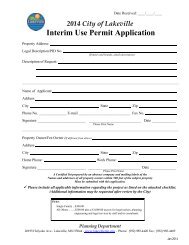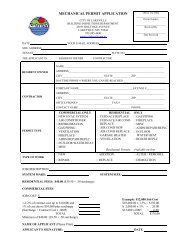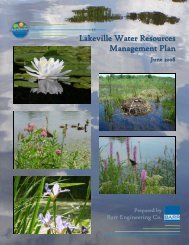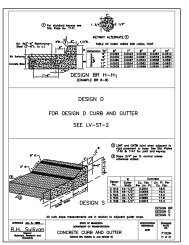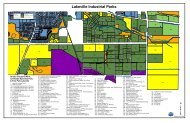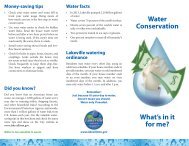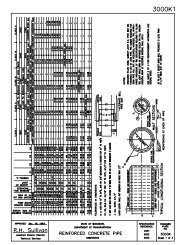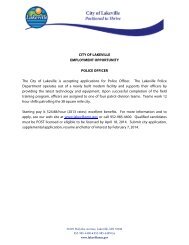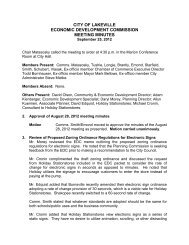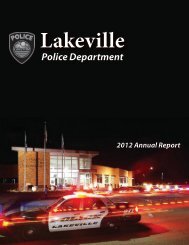Aquatic Plant Surveys for Orchard Lake, Lakeville ... - City of Lakeville
Aquatic Plant Surveys for Orchard Lake, Lakeville ... - City of Lakeville
Aquatic Plant Surveys for Orchard Lake, Lakeville ... - City of Lakeville
Create successful ePaper yourself
Turn your PDF publications into a flip-book with our unique Google optimized e-Paper software.
Chet Reneson: Tight Line, undated<br />
<strong>Aquatic</strong> <strong>Plant</strong> <strong>Surveys</strong> <strong>for</strong> <strong>Orchard</strong> <strong>Lake</strong>,<br />
<strong>Lake</strong>ville, Minnesota, 2008<br />
Summer <strong>Surveys</strong>: May 30 and September 1, 2008<br />
Prepared <strong>for</strong>:<br />
<strong>City</strong> <strong>of</strong> <strong>Lake</strong>ville<br />
<strong>Lake</strong>ville, Minnesota<br />
Prepared by:<br />
Steve McComas and Jo Stuckert<br />
Blue Water Science<br />
St. Paul, Minnesota<br />
Submitted January 2009
<strong>Aquatic</strong> <strong>Plant</strong> <strong>Surveys</strong> <strong>for</strong> <strong>Orchard</strong> <strong>Lake</strong>,<br />
<strong>Lake</strong>ville, Minnesota, 2008<br />
Summary<br />
Two aquatic plant surveys were conducted on <strong>Orchard</strong> <strong>Lake</strong> (234 acres) in 2008 The early<br />
summer survey on May 30, 2008 occurred be<strong>for</strong>e the aquatic weed harvester finished<br />
harvesting curlyleaf pondweed on <strong>Orchard</strong> <strong>Lake</strong>. The May 30 survey evaluated the distribution<br />
and abundance <strong>of</strong> curlyleaf pondweed. The late summer survey <strong>of</strong> September 1 characterized<br />
any changes in the plant community and there were checks <strong>for</strong> Eurasian watermilfoil.<br />
Early Summer Survey: In early summer, the most abundant plant in <strong>Orchard</strong> <strong>Lake</strong> was<br />
curlyleaf pondweed and it was found at 96% <strong>of</strong> the 26 stations (Table 1). In the past, curlyleaf<br />
pondweed has been growing to the surface producing recreational nuisance conditions in water<br />
depths out to 10 feet. Harvesting in 2004, 2005, 2006, 2007, and 2008 has drastically reduced<br />
nuisance curlyleaf growth (defined as curlyleaf growing to the surface). Overall aquatic plants<br />
grew to a depth <strong>of</strong> 10 feet in 2008. No Eurasian watermilfoil was found in this survey.<br />
Late Summer Survey: The dominant plant in September <strong>of</strong> 2008 in <strong>Orchard</strong> <strong>Lake</strong> was coontail<br />
(Table 1). No Eurasian watermilfoil was found in this late summer survey. Overall, aquatic<br />
plants grew out to a depth <strong>of</strong> 10 feet around much <strong>of</strong> the lake except in the southeast end <strong>of</strong> the<br />
lake. <strong>Aquatic</strong> plants covered about 120 acres, representing 51% <strong>of</strong> the 234 acre lake. Coontail<br />
was the dominant plant in the September survey occurring at 82% <strong>of</strong> the stations. Significant<br />
amounts <strong>of</strong> benthic filamentous algae rose to the surface and washed up on the south side <strong>of</strong><br />
the lake in July and August <strong>of</strong> 2008.<br />
No Harvesting Post Harvesting Post Harvesting<br />
Conditions Conditions<br />
Pre Harvesting Pre Harvesting Pre Harvesting<br />
Conditions Conditions Conditions<br />
Figure 1. The coverage <strong>of</strong> aquatic plants in early summer from 2003 to 2008 is shown in pink and nuisance<br />
curlyleaf pondweed is shown in red. An estimated 70 acres <strong>of</strong> nuisance curlyleaf growth was found in 2003.<br />
Mechanical weed harvesting was conducted on <strong>Orchard</strong> <strong>Lake</strong> in May <strong>of</strong> 2004 through 2008. An estimated 41<br />
acres <strong>of</strong> nuisance curlyleaf growth was found prior to mechanical harvesting. The area <strong>of</strong> nuisance<br />
coverage after harvesting was completed was less in 2004 through 2008 compared to 2003 conditions.<br />
-i-
Table 1. The percent occurrence <strong>of</strong> aquatic plants <strong>for</strong> <strong>Orchard</strong> <strong>Lake</strong> in 2008. Percent<br />
occurrence is calculated based on the number <strong>of</strong> times a plant species occurs at a<br />
sampling station on transects divided into the number <strong>of</strong> total stations <strong>for</strong> the survey.<br />
For example, if milfoil was found in 25 out <strong>of</strong> 50 stations, its percent occurrence would<br />
be 50%.<br />
Duckweed<br />
(Lemna sp)<br />
Spatterdock<br />
(Nuphar variegatum)<br />
W hite waterlily<br />
(Nymphaea sp)<br />
Marigold<br />
(Bidens Beckii)<br />
Coontail<br />
(Ceratophyllum demersum)<br />
Chara<br />
(Chara sp.)<br />
Star duckweed<br />
(Lemna trisulca)<br />
Northern watermilfoil<br />
(Myriophyllum sibiricum)<br />
Naiads<br />
(Najas flexilis)<br />
Cabbage<br />
(Potamogeton amplifolius)<br />
Curlyleaf pondweed<br />
(P. crispus)<br />
Claspingleaf pondweed<br />
(P. richardsonii)<br />
Narrowleaf pondweed<br />
(P. sp)<br />
Buttercup<br />
(Ranunculus sp)<br />
Water celery<br />
(Vallisneria americana)<br />
Water stargrass<br />
(Zosterella dubia)<br />
May 30, 2008<br />
(% occur)<br />
September 1, 2008<br />
(% occur)<br />
Changes from<br />
May to September<br />
0 4 +<br />
0 14 +<br />
12 11 0<br />
4 4 0<br />
35 82 +<br />
12 25 +<br />
4 4 0<br />
8 36 +<br />
0 4 +<br />
4 7 +<br />
96 11 -<br />
4 4 0<br />
8 0 -<br />
0 0 0<br />
0 4 +<br />
0 11 +<br />
Filamentous algae 35 68 +<br />
Number <strong>of</strong> Submerged Species 9 11 +<br />
The <strong>City</strong> <strong>of</strong> <strong>Lake</strong>ville has sponsored annual aquatic plant surveys since 1999. A summary <strong>of</strong><br />
the percent occurrence <strong>of</strong> individual species on a lakewide basis is shown in Table 2. Since<br />
1995, it appears that eight submerged species have increased and three submerged species<br />
have decreased. Six species are found sparingly or have not changed in abundance. The<br />
number <strong>of</strong> species found in <strong>Orchard</strong> <strong>Lake</strong> has remained about the same since 1995 (Table 2).<br />
-ii-
Table 2. The percent occurrence <strong>of</strong> aquatic plants <strong>for</strong> <strong>Orchard</strong> <strong>Lake</strong> <strong>for</strong> 1995 and 1999 through 2008. Mechanical harvesting has occurred from 2004 to 2008<br />
(blue shading). Changes in plant abundance are rated as: + = increase, -- = decrease, 0 = no significant change (1995 data are from Barr Engineering Company,<br />
Diagnostic Study <strong>of</strong> <strong>Orchard</strong> <strong>Lake</strong>, 1999).<br />
Duckweed<br />
(Lemna sp)<br />
Spatterdock<br />
(Nuphar variegatum)<br />
White waterlily<br />
(Nymphaea sp)<br />
Marsh marigold<br />
(Bidens beckii)<br />
Coontail<br />
(Ceratophyllum<br />
demersum)<br />
Chara<br />
(Chara sp.)<br />
Star duckweed<br />
(Lemna trisulca)<br />
Northern watermilfoil<br />
(Myriophyllum<br />
sibiricum)<br />
Naiads<br />
(Najas sp)<br />
Nitella<br />
(Nitella sp)<br />
Cabbage<br />
(Potamogeton<br />
amplifolius)<br />
Curlyleaf pondweed<br />
(P. crispus)<br />
Illinois pondweed<br />
(P. illinoensis)<br />
Stringy pondweed<br />
(P. pusillus)<br />
Claspingleaf<br />
pondweed<br />
(P. richardsonii)<br />
Narrowleaf<br />
pondweed<br />
(P. sp)<br />
Flatstem pondweed<br />
(P. zosteri<strong>for</strong>mis)<br />
Buttercup<br />
(Ranunculus sp)<br />
Sago pondweed<br />
(Stuckenia<br />
pectinatus)<br />
Water celery<br />
(Vallisneria<br />
americana)<br />
Water stargrass<br />
(Zosterella dubia)<br />
Number <strong>of</strong><br />
submerged species<br />
June 16,<br />
1995<br />
% Occur<br />
(based on<br />
57<br />
stations)<br />
June 5,<br />
1999<br />
% Occur<br />
(based on<br />
39<br />
stations)<br />
May 26,<br />
2000<br />
% Occur<br />
(based on<br />
39<br />
stations)<br />
June 8,<br />
2001<br />
% Occur<br />
(based on<br />
39<br />
stations)<br />
May 31,<br />
2002<br />
% Occur<br />
(based on<br />
42<br />
stations)<br />
May 17,<br />
2003<br />
% Occur<br />
(based on<br />
39<br />
stations)<br />
June 7,<br />
2004<br />
% Occur<br />
(based on<br />
24<br />
stations)<br />
May 21,<br />
2005<br />
% Occur<br />
(based on<br />
26<br />
stations)<br />
May 26,<br />
2006<br />
% Occur<br />
(based on<br />
30<br />
stations)<br />
May 22,<br />
2007<br />
% Occur<br />
(based on<br />
26<br />
stations)<br />
May 30,<br />
2008<br />
% Occur<br />
(based<br />
pm 26<br />
stations)<br />
Aug 20,<br />
1995<br />
% Occur<br />
(based on<br />
57<br />
stations)<br />
-- – -- -- -- -- -- -- -- -- -- -- -- -- -- -- 3 -- 3 -- -- 4 0<br />
-- 5 10 5 5 8 13 15 10 12 -- -- 10 8 8 10 8 12 13 10 12 14 0<br />
-- 5 3 3 7 5 4 -- 7 12 12 -- 8 13 12 10 13 27 17 17 19 11 +<br />
-- -- -- -- 5 -- -- -- -- -- 4 -- -- -- -- -- -- -- -- -- -- 4 0<br />
12 18 28 74 38 38 88 62 13 27 35 74 85 56 88 90 90 100 90 93 88 82 +<br />
12 13 13 28 12 10 4 15 10 8 12 18 26 8 27 10 5 19 13 17 19 25 +<br />
-- -- -- -- -- -- -- -- 7 8 4 -- -- 3 -- 5 5 8 17 17 15 4 +<br />
18 23 3 41 12 3 25 19 33 12 8 21 5 23 46 33 13 54 33 27 27 36 +<br />
-- -- -- -- -- -- -- -- -- -- -- 13 -- -- -- -- 3 -- 3 -- -- 4 0<br />
-- -- -- -- 2 3 -- -- -- -- -- -- -- -- -- -- -- -- -- -- -- -- 0<br />
5 8 3 13 14 10 13 19 33 31 4 8 3 13 23 10 8 27 27 27 19 7 -<br />
98 74 95 92 74 100 92 96 100 100 96 55 -- 23 4 5 26 -- 7 -- 4 11 -<br />
-- -- -- -- -- -- -- -- -- -- -- -- -- 3 -- -- -- -- -- -- -- -- 0<br />
-- -- -- 10 -- -- -- -- -- -- -- -- -- -- -- -- -- -- -- -- -- -- 0<br />
9 5 -- 10 5 -- -- -- 7 4 4 18 3 5 8 3 8 8 -- 7 4 4 0<br />
-- -- -- -- -- -- -- -- -- -- 8 -- -- -- -- -- -- -- -- -- -- --<br />
2 -- -- 5 -- -- 4 -- 7 -- -- 13 5 -- 4 8 -- 4 3 -- -- -- 0<br />
-- 8 3 -- -- 3 4 12 3 8 -- -- -- -- -- -- -- 8 -- -- -- -- -<br />
4 -- -- -- -- -- -- -- -- -- -- 8 -- 8 4 -- -- 8 3 3 -- -- 0<br />
-- -- -- -- -- -- -- -- -- -- -- -- -- 3 -- 3 13 12 13 3 12 4 +<br />
4 -- -- -- -- -- -- -- -- -- -- -- -- -- -- -- 3 27 13 3 8 11 +<br />
9 7 6 8 8 7 7 6 9 8 9 9 6 10 8 9 10 11 11 9 9 11<br />
Aug 14,<br />
1999<br />
% Occur<br />
(based on<br />
39<br />
stations)<br />
Oct 6,<br />
2000<br />
% Occur<br />
(based on<br />
39<br />
stations)<br />
Sept 17,<br />
2001<br />
% Occur<br />
(based on<br />
39<br />
stations)<br />
Sept 8,<br />
2002<br />
% Occur<br />
(based on<br />
39<br />
stations)<br />
Aug 20,<br />
2003<br />
% Occur<br />
(based on<br />
39<br />
stations)<br />
Aug 29,<br />
2004<br />
% Occur<br />
(based on<br />
26<br />
stations)<br />
Aug 22,<br />
2005<br />
% Occur<br />
(based on<br />
30<br />
stations)<br />
Aug 21,<br />
2006<br />
% Occur<br />
(based on<br />
30<br />
stations)<br />
Aug 26,<br />
2007<br />
% Occur<br />
(based on<br />
26<br />
stations)<br />
Sept 1,<br />
2008<br />
% Occur<br />
(based on<br />
28<br />
stations)<br />
Change<br />
from 1995<br />
to 2007<br />
(spring<br />
and fall)<br />
-iii-
Summary <strong>of</strong> <strong>Orchard</strong> <strong>Lake</strong> Water Quality: Summer averages <strong>for</strong> clarity (using a Secchi<br />
disc), phosphorus, and algae (using chlorophyll analysis) were some <strong>of</strong> the best on record in<br />
2008 (Table 3). <strong>Orchard</strong> <strong>Lake</strong> is not in the impaired status category. Impaired criteria are<br />
shown in Table 4.<br />
Table 3. Water quality summary <strong>for</strong> <strong>Orchard</strong> <strong>Lake</strong>. Data are May-September averages from the<br />
Met Council CAMP program. Blue shading represents years <strong>of</strong> significant curlyleaf pondweed<br />
harvesting.<br />
Secchi Disc<br />
(m)<br />
Total Phosphorus<br />
(ppb)<br />
Chlorophyll a<br />
(ppb)<br />
1980 2 40 16<br />
1981 3 26 11<br />
1983 2.9 31 11<br />
1987 1.8 -- --<br />
1988 2.3 -- --<br />
1989 2.1 28 14<br />
1990 1 -- --<br />
1991 1.9 -- --<br />
1993 2 35 17<br />
1995 1.3 44 31<br />
1996 2.3 28 15<br />
1998 1.9 38 24<br />
1999 2.1 34 30<br />
2000 2 39 20<br />
2001 2.3 25 13<br />
2004 2.6 38 17<br />
2005 2.4 32 12<br />
2006 2.2 34 14<br />
2007 1.6 41 23<br />
2008 3.0 24 11<br />
Table 4. MPCA nutrient criteria <strong>for</strong> impaired lakes (MPCA 2005). <strong>Orchard</strong> <strong>Lake</strong> is a deep lake.<br />
Water quality results indicate <strong>Orchard</strong> <strong>Lake</strong> is not in the impaired category.<br />
Secchi Disc<br />
(m)<br />
Total Phosphorus<br />
(ppb)<br />
Chlorophyll a<br />
(ppb)<br />
Shallow <strong>Lake</strong> >1.0
<strong>Orchard</strong> <strong>Lake</strong> Dakota County (ID: 19-31)<br />
Size: 234 acres; Littoral area: 177 acres (MnDNR)<br />
Maximum depth: 33 feet (MnDNR map)<br />
Introduction<br />
<strong>Orchard</strong> <strong>Lake</strong> is a 234 acre moderately fertile lake in <strong>Lake</strong>ville, Minnesota. In 2008, the<br />
average summer water clarity was 3.0 meters (9.8 feet) and the total phosphorus<br />
concentration was 24 parts per billion (source: CAMP, Met Council).<br />
The plants <strong>of</strong> <strong>Orchard</strong> <strong>Lake</strong> were sampled to evaluate curlyleaf pondweed and to look <strong>for</strong><br />
Eurasian watermilfoil. Eurasian watermilfoil has not been found in <strong>Orchard</strong> <strong>Lake</strong> (as <strong>of</strong><br />
September 1, 2008). Steve McComas, Blue Water Science, conducted two aquatic plant<br />
surveys on May 30 and September 1, 2008.<br />
Methods<br />
Thirteen transects were made at different locations around <strong>Orchard</strong> <strong>Lake</strong>. A transect<br />
started at the weedline and headed into shore (Figure 1). Two depths (0-5 feet and 6-10<br />
feet) along the transect were sampled with a rake to assess the aquatic plant composition.<br />
The amount <strong>of</strong> plants on the rake determined the density <strong>of</strong> each species at that location.<br />
Low density rated a ‘1' and a high density was a ‘5'.<br />
Figure 1. Transects <strong>for</strong> plant surveys on May 30 and September 1, 2008. Transects 8.5 and 11.5<br />
were not included in statistics in 2008 to stay consistent with previous surveys.<br />
<strong>Orchard</strong> <strong>Lake</strong> <strong>Aquatic</strong> <strong>Plant</strong> <strong>Surveys</strong> <strong>for</strong> 2008 1
Results: May 8 -- Curlyleaf Assessment<br />
In 2007, curlyleaf pondweed grew to nuisance levels quicker than expected and by the<br />
time the mechanical harvesters arrived and curlyleaf growth was well advanced. In 2008,<br />
an early curlyleaf assessment was conducted on May 8, 2008 to evaluate curlyleaf growth<br />
status. In early May, curlyleaf growth was present, but stem length was short, at less than<br />
a foot. Harvesting was scheduled <strong>for</strong> the second half <strong>of</strong> May.<br />
It appears the rapid curlyleaf growth in 2007 was not the typical pattern, and curlyleaf<br />
harvesting can generally start about the third week in May.<br />
Figure 2. On May 8, 2008 curlyleaf pondweed was present, but stem lengths were generally less than<br />
12-inches tall. In the southeast side <strong>of</strong> <strong>Orchard</strong> <strong>Lake</strong>, thick bottom mats <strong>of</strong> filamentous algae were<br />
present.<br />
<strong>Orchard</strong> <strong>Lake</strong> <strong>Aquatic</strong> <strong>Plant</strong> <strong>Surveys</strong> <strong>for</strong> 2008 2
Results: May 30 -- Early Summer Survey<br />
In early summer, the most abundant plant in <strong>Orchard</strong> <strong>Lake</strong> was curlyleaf pondweed and it<br />
was found at 96% <strong>of</strong> the 26 stations. In the past, curlyleaf pondweed has been growing to<br />
the surface producing recreational nuisance conditions in water depths out to 10 feet.<br />
Harvesting in 2004 through 2008 has drastically reduced nuisance curlyleaf growth<br />
(defined as curlyleaf growing to the surface). Overall aquatic plants grew to a depth <strong>of</strong> 10<br />
feet in 2008. No Eurasian watermilfoil was found in this survey. A summary <strong>of</strong> the<br />
occurrence and density <strong>of</strong> aquatic plants is shown in Table 1.<br />
An aquatic plant coverage map is shown in Figure 3. Curlyleaf pondweed coverage is<br />
basically the same as the aquatic plant coverage map with coverage approximately at 180<br />
acres. This is nearly the same coverage <strong>of</strong> curlyleaf that was surveyed in 2003 (prior to<br />
the start <strong>of</strong> the harvesting program). However, the area <strong>of</strong> nuisance curlyleaf pondweed<br />
growth is less in 2008 compared to 2003. Nuisance coverage <strong>of</strong> curlyleaf pondweed in<br />
2008 is shown in Figure 3 and was sampled prior to harvesting. After harvesting was<br />
completed in early June, there was very little curlyleaf pondweed growth that would be<br />
considered a nuisance.<br />
A summary <strong>of</strong> plant density and occurrence <strong>for</strong> individual transects is shown in Table 2.<br />
Curlyleaf pondweed conditions are shown in Figure 4.<br />
Figure 3. <strong>Aquatic</strong> plant coverage and curlyleaf coverage on May 30, 2008. Pink shading represents<br />
non-nuisance curlyleaf growth along with other plants. Red shading indicates nuisance curlyleaf<br />
growth prior to harvesting.<br />
<strong>Orchard</strong> <strong>Lake</strong> <strong>Aquatic</strong> <strong>Plant</strong> <strong>Surveys</strong> <strong>for</strong> 2008 3
Table 1. <strong>Orchard</strong> <strong>Lake</strong> aquatic plant occurrences and densities <strong>for</strong> the May 30, 2008<br />
survey based on 15 transects and 2 depths, <strong>for</strong> a total <strong>of</strong> 30 stations. Density ratings are<br />
1-5 with 1 being low and 5 being most dense. Transect 8.5 and 11.5 were not used in<br />
statistics.<br />
W hite waterlily<br />
(Nymphaea tuberosa)<br />
Marigold<br />
(Bidens Beckii)<br />
Coontail<br />
(Ceratophyllum demersum)<br />
Chara<br />
(Chara sp)<br />
Star duckweed<br />
(Lemna trisulca)<br />
Northern watermilfoil<br />
(Myriophyllum sibiricum)<br />
Cabbage<br />
(Potamogeton amplifolius)<br />
Curlyleaf pondweed<br />
(P. crispus)<br />
Claspingleaf pondweed<br />
(P. Richardsonii)<br />
Narrowleaf pondweed<br />
(P. sp)<br />
Filamentous algae<br />
Depth<br />
0- 5 feet<br />
(n=13)<br />
Occur %<br />
Occur<br />
Depth<br />
6 - 10 feet<br />
(n= 13)<br />
Density Occur %<br />
Occur<br />
All Stations<br />
(n=26)<br />
Density Occur %<br />
Occur<br />
Density<br />
3 23 1.2 -- -- -- 3 12 1.2<br />
1 8 0.5 -- -- -- 1 4 0.5<br />
8 62 1.7 1 8 1.0 9 35 1.6<br />
3 23 1.3 --– --– -- 3 12 1.3<br />
1 8 0.5 -- -- -- 1 4 0.5<br />
2 15 1.0 -- -- -- 2 8 1.0<br />
1 8 1.0 -- -- -- 1 4 1.0<br />
12 92 2.7 13 100 2.8 25 96 2.8<br />
1 8 0.5 -- -- -- 1 4 0.5<br />
2 15 0.5 -- -- -- 2 8 0.5<br />
4 31 2.0 5 38 2.1 9 35 2.0<br />
Figure 4. <strong>Aquatic</strong> mammals were active<br />
on <strong>Orchard</strong> <strong>Lake</strong> in 2008. Here muskrats<br />
have dislodged spatterdock roots. The<br />
roots are a good food source <strong>for</strong><br />
muskrats.<br />
<strong>Orchard</strong> <strong>Lake</strong> <strong>Aquatic</strong> <strong>Plant</strong> <strong>Surveys</strong> <strong>for</strong> 2008 4
Table 2. Individual transect data <strong>for</strong> <strong>Orchard</strong> <strong>Lake</strong> <strong>for</strong> May 30, 2008.<br />
T1 T2 T3 T4 T5 T6 T7<br />
0 - 5 6 -10 0 - 5 6 -10 0 - 5 6 -10 0 - 5 6 -10 0 - 5 6 -10 0 - 5 6 -10 0 - 5 6 -10<br />
White waterlily 1<br />
Marigold 0.5<br />
Coontail 2 0.5 1 2 2<br />
Chara 2 1<br />
Star duckweed 0.5<br />
Northern watermilfoil 1<br />
Cabbage<br />
Curlyleaf pondweed 2 2.3 2 1 2 1 2 4.5 2.5 3 3 4 4<br />
Claspingleaf pondweed<br />
Narrowleaf pondweed 0.5 0.5<br />
Filamentous algae 2 1.3 1 2 3<br />
T8 T8.5 T9 T10 T11 T11.5 T12 T13<br />
0 - 5 6 -10 0 - 5 6 -10 0 - 5 6 -10 0 - 5 6 -10 0 - 5 6 -10 0 - 5 6 -10 0 - 5 6 -10 0 - 5 6 -10<br />
White waterlily 1 1.5<br />
Marigold<br />
Coontail 1 1 2 3<br />
Chara 2 2 1<br />
Star duckweed<br />
Northern watermilfoil 1<br />
Cabbage 1<br />
Curlyleaf pondweed 3 1.5 2 4 3.5 5 4 1 3 4 2 2 4 1.5 2<br />
Claspingleaf pondweed 0.5<br />
Narrowleaf pondweed<br />
Filamentous algae 2 1 4 2<br />
Figure 5. Curlyleaf pondweed on<br />
the sample rake at a density <strong>of</strong> a<br />
‘2'.<br />
<strong>Orchard</strong> <strong>Lake</strong> <strong>Aquatic</strong> <strong>Plant</strong> <strong>Surveys</strong> <strong>for</strong> 2008 5
Results: August 13 -- Filamentous Algae Assessment<br />
In mid-summer <strong>of</strong> 2008, it was apparent that floating filamentous algae was more<br />
abundant compared to previous years. Although floating filamentous algae was above<br />
average in 2008, widespread benthic filamentous algae has been observed in <strong>Orchard</strong><br />
<strong>Lake</strong> <strong>for</strong> at least the previous five years. A map <strong>of</strong> benthic filamentous algae in <strong>Orchard</strong><br />
<strong>Lake</strong> on August 13, 2008 is shown in Figure 6.<br />
An unusual event occurred in <strong>Orchard</strong> <strong>Lake</strong> in 2008. The benthic algae on the southeast<br />
side <strong>of</strong> <strong>Orchard</strong> <strong>Lake</strong>, lifted <strong>of</strong>f the bottom and floated to the lake surface. A significant<br />
amount <strong>of</strong> floating filamentous algae was blown into the shoreline area (Figure 7).<br />
Figure 6. Benthic filamentous algae map <strong>for</strong> August 13, 2008.<br />
<strong>Orchard</strong> <strong>Lake</strong> <strong>Aquatic</strong> <strong>Plant</strong> <strong>Surveys</strong> <strong>for</strong> 2008 6
In 2008, this was the first year since surveys have been conducted that the benthic algae<br />
came to the surface (Figure 7). A sample was examined under the microscope and<br />
determined to be a blue-green filamentous algae, Oscillatoria.<br />
It may be the exceptional water clarity <strong>of</strong> 2008 combined with other factors contributed to<br />
this type <strong>of</strong> event. The sediment release <strong>of</strong> the benthic filamentous algae is not expected<br />
to occur on an annual basis unless conditions are just right.<br />
Figure 7. [top - left] Some <strong>of</strong> the floating filamentous algae that collected on the south shoreline <strong>of</strong><br />
<strong>Orchard</strong> <strong>Lake</strong> in 2008. [top - right] Close-up shot <strong>of</strong> the filamentous algae. [bottom - left] A rake<br />
sample <strong>of</strong> benthic (or bottom) filamentous algae. [bottom - right] The algae was examined under the<br />
microscope and magnified 125 times. It was a blue-green algae called Oscillatoria.<br />
<strong>Orchard</strong> <strong>Lake</strong> <strong>Aquatic</strong> <strong>Plant</strong> <strong>Surveys</strong> <strong>for</strong> 2008 7
Results: September 1 -- Late Summer Survey<br />
The dominant plant in the survey <strong>of</strong> September 1, 2008 in <strong>Orchard</strong> <strong>Lake</strong> was coontail<br />
(Table 3). No Eurasian watermilfoil was found in this late summer survey. The<br />
occurrence and density <strong>of</strong> plants <strong>for</strong> each transect are shown in Table 4.<br />
Overall, aquatic plants grew out to a depth <strong>of</strong> 10 feet around much <strong>of</strong> the north end <strong>of</strong> the<br />
lake, otherwise growth was out to the 6 or 7 foot water depth (Figure 5). A map <strong>of</strong><br />
aquatic plant coverage is shown in Figure 5. <strong>Aquatic</strong> plants covered about 120 acres,<br />
representing 51% <strong>of</strong> the 234 acre lake. Coontail continues to grow densely around the<br />
lake. Northern watermilfoil and chara were important plants in <strong>Orchard</strong> <strong>Lake</strong> in<br />
September <strong>of</strong> 2008.<br />
Figure 8. <strong>Aquatic</strong> plant coverage map <strong>for</strong> <strong>Orchard</strong> <strong>Lake</strong> on September 1, 2008. The green area<br />
shows coverage <strong>of</strong> aquatic plants.<br />
<strong>Orchard</strong> <strong>Lake</strong> <strong>Aquatic</strong> <strong>Plant</strong> <strong>Surveys</strong> <strong>for</strong> 2008 8
Table 3. <strong>Orchard</strong> <strong>Lake</strong> aquatic plant occurrences and densities <strong>for</strong> the September 1,<br />
2008 survey based on 14 transects and 2 depths, <strong>for</strong> a total <strong>of</strong> 28 stations. Density<br />
ratings are 1-5 with 1 being low and 5 being most dense.<br />
Duckweed<br />
(Lemna sp)<br />
Spatterdock<br />
(Nuphar variegatum)<br />
W hite waterlily<br />
(Nymphaea tuberosa)<br />
Marigold<br />
(Bidens Beckii)<br />
Coontail<br />
(Ceratophyllum demersum)<br />
Chara<br />
(Chara sp)<br />
Star duckweed<br />
(Lemna trisulca)<br />
Northern watermilfoil<br />
(Myriophyllum sibiricum)<br />
Naiads<br />
(Najas flexilis)<br />
Cabbage<br />
(Potamogeton amplifolius)<br />
Curlyleaf pondweed<br />
(P. crispus)<br />
Claspingleaf pondweed<br />
(P. Richardsonii)<br />
Water celery<br />
(Vallisneria americana)<br />
Water stargrass<br />
(Zosterella dubia)<br />
filamentous algae<br />
Depth<br />
0 - 5 feet<br />
(n=14)<br />
Occur %<br />
Occur<br />
Depth<br />
6 - 10 feet<br />
(n= 14)<br />
Density Occur %<br />
Occur<br />
All Stations<br />
(n=28)<br />
Density Occur %<br />
Occur<br />
Density<br />
1 7 1.7 -- -- -- 1 4 1.7<br />
4 29 3.0 -- -- -- 4 14 3.0<br />
3 21 1.5 -- -- -- 3 11 1.5<br />
-- -- -- 1 7 1.0 1 4 1.0<br />
11 79 1.6 12 86 1.1 23 82 1.4<br />
4 29 2.5 3 21 1.0 7 25 1.9<br />
-- -- -- 1 7 0.5 1 4 0.5<br />
10 71 2.0 -- -- -- 10 36 2.0<br />
-- -- -- 1 7 1.0 1 4 1.0<br />
2 14 0.8 -- -- -- 2 7 0.8<br />
-- -- -- 3 21 0.4 3 11 0.4<br />
1 7 3.0 -- -- -- 1 4 3.0<br />
1 7 2.0 -- -- -- 1 4 2.0<br />
3 21 0.8 -- -- -- 3 11 0.8<br />
6 43 2.4 13 93 2.9 19 68 2.8<br />
<strong>Orchard</strong> <strong>Lake</strong> <strong>Aquatic</strong> <strong>Plant</strong> <strong>Surveys</strong> <strong>for</strong> 2008 9
Table 4. Individual transect data <strong>for</strong> <strong>Orchard</strong> <strong>Lake</strong> <strong>for</strong> September 1, 2008.<br />
T1 T2 T3 T4 T5 T6 T7<br />
0 - 5 6 -10 0 - 5 6 -10 0 - 5 6 -10 0 - 5 6 -10 0 - 5 6 -10 0 - 5 6 -10 0 - 5 6 -10<br />
Duckweed<br />
Spatterdock<br />
White waterlily 2 1.5<br />
Marigold 1<br />
Coontail 3 0.3 1 1.5 1 3 2.5 1.5 2 1 0.5<br />
Chara 3<br />
Star duckweed<br />
Northern watermilfoil 1 1 3 3 0.5<br />
Naiads 1<br />
Cabbage 0.5<br />
Curlyleaf pondweed 0.5 0.5<br />
Claspingleaf pondweed 3<br />
Water celery 2<br />
Water stargrass 0.5<br />
Filamentous algae 2.5 3 4.5 2 2 2 1 2 2 2.5<br />
T8 T9 T10 T11 T11.5 T12 T13<br />
0 - 5 6 -10 0 - 5 6 -10 0 - 5 6 -10 0 - 5 6 -10 0 - 5 6 -10 0 - 5 6 -10 0 - 5 6 -10<br />
Duckweed 1.7<br />
Spatterdock 5 2 4 1<br />
White waterlily 1<br />
Marigold<br />
Coontail 2 0.5 0.5 2 0.5 0.3 1 0.5 2 1 2 2<br />
Chara 2 1 3 1 2 1<br />
Star duckweed 0.5<br />
Northern watermilfoil 2 1.5 3.8 2 2<br />
Naiads<br />
Cabbage 1<br />
Curlyleaf pondweed 0.3<br />
Claspingleaf pondweed<br />
Water celery<br />
Water stargrass 1 1<br />
Filamentous algae 2 2 4 3.5 3 4 4 2.3 4<br />
<strong>Orchard</strong> <strong>Lake</strong> <strong>Aquatic</strong> <strong>Plant</strong> <strong>Surveys</strong> <strong>for</strong> 2008 10
Figure 9. [top] Sample rake with claspingleaf pondweed, coontail, and northern watermilfoil.<br />
[bottom] Waterlilies were common in <strong>Orchard</strong> <strong>Lake</strong> in 2008.<br />
<strong>Orchard</strong> <strong>Lake</strong> <strong>Aquatic</strong> <strong>Plant</strong> <strong>Surveys</strong> <strong>for</strong> 2008 11
Comparison <strong>of</strong> Early and Late Summer <strong>Plant</strong> <strong>Surveys</strong> in 2008<br />
In the early summer <strong>of</strong> 2008, curlyleaf pondweed was found around <strong>Orchard</strong> <strong>Lake</strong> and out<br />
to about 10 feet <strong>of</strong> water. The early summer survey in 2008 was conducted prior to<br />
mechanical harvesting and nuisance growth was observed in patches around <strong>Orchard</strong><br />
<strong>Lake</strong>. However, after harvesting in 2008, no nuisance curlyleaf pondweed was observed.<br />
By the beginning <strong>of</strong> September, curlyleaf pondweed had resprouted in several areas.<br />
Coontail was the most common plant followed by northern watermilfoil (Table 5). The<br />
acreage <strong>of</strong> aquatic submerged plants in <strong>Orchard</strong> <strong>Lake</strong> decreased from early to late<br />
summer. As is typical, coontail increased from May to September. Coontail seemed to<br />
fill in areas where curlyleaf pondweed was found in early summer. Coontail was found to<br />
occasionally grow to heavy conditions in water depths <strong>of</strong> 4 to 5 feet.<br />
Table 5. The percent occurrence <strong>of</strong> aquatic plants <strong>for</strong> <strong>Orchard</strong> <strong>Lake</strong> in 2008. Percent occurrence<br />
is calculated based on the number <strong>of</strong> times a plant species occurs at a sampling station on<br />
transects divided into the number <strong>of</strong> total stations <strong>for</strong> the survey. For example, if milfoil was<br />
found in 25 out <strong>of</strong> 50 stations, its percent occurrence would be 50%.<br />
May 30, 2008<br />
(% occur)<br />
September 1, 2008<br />
(% occur)<br />
Changes from<br />
May to September<br />
Duckweed<br />
(Lemna sp)<br />
0 4 +<br />
Spatterdock<br />
(Nuphar variegatum)<br />
0 14 +<br />
White waterlily<br />
(Nymphaea sp)<br />
12 11 0<br />
Marigold<br />
(Bidens Beckii)<br />
4 4 0<br />
Coontail<br />
(Ceratophyllum demersum)<br />
35 82 +<br />
Chara<br />
(Chara sp.)<br />
12 25 +<br />
Star duckweed<br />
(Lemna trisulca)<br />
4 4 0<br />
Northern watermilfoil<br />
(Myriophyllum sibiricum)<br />
8 36 +<br />
Naiads<br />
(Najas flexilis)<br />
0 4 +<br />
Cabbage<br />
(Potamogeton amplifolius)<br />
4 7 +<br />
Curlyleaf pondweed<br />
(P. crispus)<br />
96 11 -<br />
Claspingleaf pondweed<br />
(P. richardsonii)<br />
4 4 0<br />
Narrowleaf pondweed<br />
(P. sp)<br />
8 0 -<br />
Water celery<br />
(Vallisneria americana)<br />
0 4 +<br />
Water stargrass<br />
(Zosterella dubia)<br />
0 11 +<br />
Filamentous algae 35 68 +<br />
Number <strong>of</strong> Submerged Species 9 11 +<br />
<strong>Orchard</strong> <strong>Lake</strong> <strong>Aquatic</strong> <strong>Plant</strong> <strong>Surveys</strong> <strong>for</strong> 2008 12
Summary <strong>of</strong> Previous <strong>Aquatic</strong> <strong>Plant</strong> <strong>Surveys</strong><br />
The <strong>City</strong> <strong>of</strong> <strong>Lake</strong>ville has sponsored annual aquatic plant surveys since 1999. A summary<br />
<strong>of</strong> the percent occurrence <strong>of</strong> individual species on a lakewide basis is shown in Table 6.<br />
Since 1995, it appears that six submerged species have increased and four species have<br />
decreased. Six species are found sparingly or have not changed in abundance. The<br />
number <strong>of</strong> submerged species found in <strong>Orchard</strong> <strong>Lake</strong> has remained about the same since<br />
1995 (Table 6).<br />
The beach at <strong>Orchard</strong> <strong>Lake</strong>.<br />
<strong>Orchard</strong> <strong>Lake</strong> <strong>Aquatic</strong> <strong>Plant</strong> <strong>Surveys</strong> <strong>for</strong> 2008 13
Table 6. The percent occurrence <strong>of</strong> aquatic plants <strong>for</strong> <strong>Orchard</strong> <strong>Lake</strong> <strong>for</strong> 1995 and 1999 through 2008. Mechanical harvesting has occurred from 2004 to 2008<br />
(blue shading). Changes in plant abundance are rated as: + = increase, -- = decrease, 0 = no significant change (1995 data are from Barr Engineering Company,<br />
Diagnostic Study <strong>of</strong> <strong>Orchard</strong> <strong>Lake</strong>, 1999).<br />
Duckweed<br />
(Lemna sp)<br />
Spatterdock<br />
(Nuphar variegatum)<br />
White waterlily<br />
(Nymphaea sp)<br />
Marsh marigold<br />
(Bidens beckii)<br />
Coontail<br />
(Ceratophyllum<br />
demersum)<br />
Chara<br />
(Chara sp.)<br />
Star duckweed<br />
(Lemna trisulca)<br />
Northern watermilfoil<br />
(Myriophyllum<br />
sibiricum)<br />
Naiads<br />
(Najas sp)<br />
Nitella<br />
(Nitella sp)<br />
Cabbage<br />
(Potamogeton<br />
amplifolius)<br />
Curlyleaf pondweed<br />
(P. crispus)<br />
Illinois pondweed<br />
(P. illinoensis)<br />
Stringy pondweed<br />
(P. pusillus)<br />
Claspingleaf<br />
pondweed<br />
(P. richardsonii)<br />
Narrowleaf<br />
pondweed<br />
(P. sp)<br />
Flatstem pondweed<br />
(P. zosteri<strong>for</strong>mis)<br />
Buttercup<br />
(Ranunculus sp)<br />
Sago pondweed<br />
(Stuckenia<br />
pectinatus)<br />
Water celery<br />
(Vallisneria<br />
americana)<br />
Water stargrass<br />
(Zosterella dubia)<br />
Number <strong>of</strong><br />
submerged species<br />
June 16,<br />
1995<br />
% Occur<br />
(based on<br />
57<br />
stations)<br />
June 5,<br />
1999<br />
% Occur<br />
(based on<br />
39<br />
stations)<br />
May 26,<br />
2000<br />
% Occur<br />
(based on<br />
39<br />
stations)<br />
June 8,<br />
2001<br />
% Occur<br />
(based on<br />
39<br />
stations)<br />
May 31,<br />
2002<br />
% Occur<br />
(based on<br />
42<br />
stations)<br />
May 17,<br />
2003<br />
% Occur<br />
(based on<br />
39<br />
stations)<br />
June 7,<br />
2004<br />
% Occur<br />
(based on<br />
24<br />
stations)<br />
May 21,<br />
2005<br />
% Occur<br />
(based on<br />
26<br />
stations)<br />
May 26,<br />
2006<br />
% Occur<br />
(based on<br />
30<br />
stations)<br />
May 22,<br />
2007<br />
% Occur<br />
(based on<br />
26<br />
stations)<br />
May 30,<br />
2008<br />
% Occur<br />
(based<br />
pm 26<br />
stations)<br />
Aug 20,<br />
1995<br />
% Occur<br />
(based on<br />
57<br />
stations)<br />
-- – -- -- -- -- -- -- -- -- -- -- -- -- -- -- 3 -- 3 -- -- 4 0<br />
-- 5 10 5 5 8 13 15 10 12 -- -- 10 8 8 10 8 12 13 10 12 14 0<br />
-- 5 3 3 7 5 4 -- 7 12 12 -- 8 13 12 10 13 27 17 17 19 11 +<br />
-- -- -- -- 5 -- -- -- -- -- 4 -- -- -- -- -- -- -- -- -- -- 4 0<br />
12 18 28 74 38 38 88 62 13 27 35 74 85 56 88 90 90 100 90 93 88 82 +<br />
12 13 13 28 12 10 4 15 10 8 12 18 26 8 27 10 5 19 13 17 19 25 +<br />
-- -- -- -- -- -- -- -- 7 8 4 -- -- 3 -- 5 5 8 17 17 15 4 +<br />
18 23 3 41 12 3 25 19 33 12 8 21 5 23 46 33 13 54 33 27 27 36 +<br />
-- -- -- -- -- -- -- -- -- -- -- 13 -- -- -- -- 3 -- 3 -- -- 4 0<br />
-- -- -- -- 2 3 -- -- -- -- -- -- -- -- -- -- -- -- -- -- -- -- 0<br />
5 8 3 13 14 10 13 19 33 31 4 8 3 13 23 10 8 27 27 27 19 7 -<br />
98 74 95 92 74 100 92 96 100 100 96 55 -- 23 4 5 26 -- 7 -- 4 11 -<br />
-- -- -- -- -- -- -- -- -- -- -- -- -- 3 -- -- -- -- -- -- -- -- 0<br />
-- -- -- 10 -- -- -- -- -- -- -- -- -- -- -- -- -- -- -- -- -- -- 0<br />
9 5 -- 10 5 -- -- -- 7 4 4 18 3 5 8 3 8 8 -- 7 4 4 0<br />
-- -- -- -- -- -- -- -- -- -- 8 -- -- -- -- -- -- -- -- -- -- --<br />
2 -- -- 5 -- -- 4 -- 7 -- -- 13 5 -- 4 8 -- 4 3 -- -- -- 0<br />
-- 8 3 -- -- 3 4 12 3 8 -- -- -- -- -- -- -- 8 -- -- -- -- -<br />
4 -- -- -- -- -- -- -- -- -- -- 8 -- 8 4 -- -- 8 3 3 -- -- 0<br />
-- -- -- -- -- -- -- -- -- -- -- -- -- 3 -- 3 13 12 13 3 12 4 +<br />
4 -- -- -- -- -- -- -- -- -- -- -- -- -- -- -- 3 27 13 3 8 11 +<br />
9 7 6 8 8 7 7 6 9 8 9 9 6 10 8 9 10 11 11 9 9 11<br />
Aug 14,<br />
1999<br />
% Occur<br />
(based on<br />
39<br />
stations)<br />
Oct 6,<br />
2000<br />
% Occur<br />
(based on<br />
39<br />
stations)<br />
Sept 17,<br />
2001<br />
% Occur<br />
(based on<br />
39<br />
stations)<br />
Sept 8,<br />
2002<br />
% Occur<br />
(based on<br />
39<br />
stations)<br />
Aug 20,<br />
2003<br />
% Occur<br />
(based on<br />
39<br />
stations)<br />
Aug 29,<br />
2004<br />
% Occur<br />
(based on<br />
26<br />
stations)<br />
Aug 22,<br />
2005<br />
% Occur<br />
(based on<br />
30<br />
stations)<br />
Aug 21,<br />
2006<br />
% Occur<br />
(based on<br />
30<br />
stations)<br />
Aug 26,<br />
2007<br />
% Occur<br />
(based on<br />
26<br />
stations)<br />
Sept 1,<br />
2008<br />
% Occur<br />
(based on<br />
28<br />
stations)<br />
Change<br />
from 1995<br />
to 2007<br />
(spring<br />
and fall)<br />
<strong>Orchard</strong> <strong>Lake</strong> <strong>Aquatic</strong> <strong>Plant</strong> <strong>Surveys</strong> <strong>for</strong> 2008 14
Summary <strong>of</strong> Previous Curlyleaf Pondweed <strong>Surveys</strong><br />
Curlyleaf coverage has stayed about the same, going back to 1999 although there may be<br />
a slight decrease in water depths <strong>of</strong> 6 to 10 feet from 2004 - 2008 (Table 7 and Figures<br />
10-16). The pattern appears to be that curlyleaf pondweed declines from spring to late<br />
summer and coontail increases. The abundance <strong>of</strong> curlyleaf pondweed nuisance growth<br />
varies from year to year. Nuisance growth was especially heavy in 1999 and 2002 due in<br />
part, to late onset <strong>of</strong> lake ice, lack <strong>of</strong> snow, and early ice out. Harvesting from 2004<br />
through 2008 has reduced the acres <strong>of</strong> curlyleaf nuisance growth (Figures 10-16).<br />
Additional sampling results using scuba diving to quantify stem densities at two locations<br />
show that curlyleaf stem densities decreased with harvesting from 2004 through 2006,<br />
with an increase in 2007 and then a decrease in 2008 (Table 7).<br />
Table 7. Summary <strong>of</strong> the density <strong>of</strong> curlyleaf pondweed <strong>for</strong> the early summer surveys <strong>of</strong><br />
1999 through 2008. Blue shading indicates years <strong>of</strong> mechanical harvesting.<br />
Survey Date<br />
1999<br />
(June 5)<br />
2000<br />
(May 26)<br />
2001<br />
(June 8)<br />
2002<br />
(May 21)<br />
2003<br />
(May 17)<br />
2004<br />
(June 7)<br />
(post harvest)<br />
2005<br />
(May 21)<br />
(pre-harvest)<br />
2006<br />
(May 26)<br />
(pre-harvest)<br />
2007<br />
(May 22)<br />
(pre-harvest)<br />
2008<br />
(May 30)<br />
(pre-harvest)<br />
Average Early Summer Curlyleaf Density<br />
(0-5- scale)<br />
0-5 ft<br />
Depth<br />
6-10 ft<br />
Depth<br />
11-15 ft<br />
Depth<br />
All<br />
Stations<br />
Stem Densities in<br />
Known Dense CLP<br />
Area That Has Been<br />
Harvested (stems/m 2 )<br />
(5-feet) (n=20)<br />
3.4 4.6 3.8 4.0 ND<br />
4.0 3.9 2.2 3.4 ND<br />
2.5 2.8 2.8 2.7 ND<br />
3.8 4.1 2.0 3.6 ND<br />
3.5 4.0 2.6 3.4 436<br />
2.1 2.5 0 2.3 403<br />
2.1 3.1 0 2.6 407<br />
3.6 3.2 0 3.4 341<br />
3.9 2.7 0 3.3 514<br />
2.7 2.8 0 2.8 360<br />
<strong>Orchard</strong> <strong>Lake</strong> <strong>Aquatic</strong> <strong>Plant</strong> <strong>Surveys</strong> <strong>for</strong> 2008 15
Figure 10. 2002 early summer aquatic<br />
plant coverage. Nuisance curlyleaf<br />
pondweed is shown in red.<br />
Figure 11. 2003 early summer aquatic<br />
plant coverage. Curlyleaf was found<br />
growing out to 15 feet <strong>of</strong> water depth.<br />
Nuisance curlyleaf pondweed is shown<br />
in red and covered about 70 acres.<br />
Figure 12. 2004 early summer aquatic<br />
plant coverage. Nuisance curlyleaf<br />
pondweed is shown in red after<br />
harvesting was completed. Harvesting<br />
significantly decreased the acreage <strong>of</strong><br />
nuisance growth.<br />
Figure 13. 2005 early summer aquatic<br />
plant coverage. Curlyleaf was found<br />
growing out to 10 feet <strong>of</strong> water depth.<br />
Nuisance curlyleaf pondweed did not<br />
appear in 2005 due to the harvesting.<br />
Figure 14. 2006 early summer aquatic<br />
plant coverage. Nuisance curlyleaf<br />
pondweed is shown in red be<strong>for</strong>e<br />
harvesting was completed. After<br />
harvesting was completed curlyleaf<br />
pondweed was greatly reduced.<br />
Figure 15. 2007 early summer aquatic<br />
plant coverage. Nuisance curlyleaf<br />
pondweed is shown in red shading be<strong>for</strong>e<br />
harvesting.<br />
Figure 16. 2008 early summer aquatic<br />
plant coverage. Curlyleaf was found<br />
growing out to 11 feet. Nuisance curlyleaf<br />
pondweed, shown in red, was present in<br />
two locations.<br />
<strong>Orchard</strong> <strong>Lake</strong> <strong>Aquatic</strong> <strong>Plant</strong> <strong>Surveys</strong> <strong>for</strong> 2008 16
Summary <strong>of</strong> Curlyleaf Pondweed Densities from 1999 - 2008<br />
The <strong>City</strong> <strong>of</strong> <strong>Lake</strong>ville has sponsored annual early summer aquatic plant surveys on<br />
<strong>Orchard</strong> <strong>Lake</strong> <strong>for</strong> the last ten years, from 1999 through 2008. For each survey, the same<br />
transect locations and depth zones were used (Figure 17). A curlyleaf density was<br />
assigned at each depth on a transect, each year. A density rating <strong>of</strong> 1 - 5 was used with 5<br />
being the most dense, where plants were matted at the surface.<br />
A summary <strong>of</strong> curlyleaf pondweed densities <strong>for</strong> individual depths on all transects <strong>for</strong> each<br />
survey is shown in Figure 18. This chart shows that <strong>Orchard</strong> lake has numerous areas <strong>of</strong><br />
high density curlyleaf pondweed growth. There is also a fair amount <strong>of</strong> variability from<br />
year to year as the number <strong>of</strong> red squares on a survey (indicative <strong>of</strong> high density) ranges<br />
from 3 to 23. Since harvesting began, the average number <strong>of</strong> red squares/survey has<br />
averaged 9 <strong>for</strong> harvesting years verses 17 <strong>for</strong> pre-harvesting years.<br />
It appears the variability <strong>of</strong> curlyleaf from year to year is influenced by climatic factors<br />
whereas the variability <strong>of</strong> curlyleaf within a lake is influenced by the sediment<br />
composition.<br />
Density ratings and growth categories <strong>for</strong> light, moderate, and heavy growth are shown in<br />
Figure 19.<br />
Figure 17. <strong>Orchard</strong> <strong>Lake</strong> aquatic plant transect locations.<br />
<strong>Orchard</strong> <strong>Lake</strong> <strong>Aquatic</strong> <strong>Plant</strong> <strong>Surveys</strong> <strong>for</strong> 2008 17
Curlyleaf Pondweed Density Summary <strong>for</strong> <strong>Plant</strong> <strong>Surveys</strong><br />
Transect<br />
Depth<br />
1999<br />
Jun 5<br />
2000<br />
May 26<br />
2001<br />
Jun 8<br />
2002<br />
May 31<br />
2003<br />
May 17<br />
2004<br />
Jun 7<br />
2005<br />
May 21<br />
2006<br />
May 26<br />
2007<br />
May 22<br />
2008<br />
May 30<br />
Average<br />
% Red<br />
>50%<br />
Predicted<br />
growth based<br />
on lake soils<br />
S 5 5 2 5 5 2.5 4 3 1.5 2 3.5 50 Moderate<br />
1<br />
M 5 5 2 3.5 4.5 3.5 4 3.5 2.5 3 3.6 40<br />
D 3 2 2 X 4 X X X X 1 2.4 10<br />
S 5 5 4 5 2.5 0 2 4 3.3 0 3.1 50 Moderate<br />
2<br />
M 5 5 4 4 3 2 4 3.8 4 2 3.7 70 Heavy<br />
D 4 2 4 X 3 X X X X 0 2.6 20<br />
S 5 4 2 4 2 0.5 1 4 1 1 2.5 40 Heavy<br />
3<br />
M 0 5 2.5 4 5 2 2 3.3 3 2 2.9 30 Heavy<br />
D 0 3 2.5 4 4 X X X X 0 2.3 20<br />
S 3 3 3 1 3 2 0.5 2 2 1 2.1 0 Heavy<br />
4<br />
M 5 4 3 3.5 4 1 1.3 2.3 3.3 2 2.9 30<br />
D 4 3 3 1 3 X X X X 2 2.5 10<br />
S 5 0 3 4 4 4.5 0 5 5 4.5 3.5 70 Heavy<br />
5<br />
M 5 4 3.5 4.5 4 4 3 3.6 2.5 4 3.8 60 Moderate<br />
D 0 2 3.5 2 3 X X X X 1 1.9 0<br />
S 5 5 0 5 4 4.5 3 2.5 4 1 3.4 60<br />
6<br />
M 0 5 3 4.5 4 3.5 4 2 2.5 4 3.2 50 Heavy<br />
D 0 1.5 3 2 3 X X X X X 1.9 0<br />
S 1 5 0 3 5 0.5 2 5 4.5 4 3.0 50<br />
7<br />
M 4 3 3 4 4.5 2 3.5 4 2 4 3.4 50 Heavy<br />
D 0 2 3 X 2 X X X X X 1.8 0<br />
S 2 3 0 2 1 X 3 5 5 3 2.7 20 Heavy<br />
8<br />
M 5 2 1 2.5 2 X 1.5 2.5 1 2 2.2 10<br />
D 4 2 1 1 1 X X X X 1 1.7 10<br />
S 1 5 1 4 5 1.5 3 5 4.5 4 3.4 60<br />
9<br />
M 4 3 3 4.5 4 2.5 4 3.3 3 4 3.6 50 Heavy<br />
D 4 2 3 X 2 X X X X 3 2.8 10<br />
S 4 2 1 5 4 0 1 4 4 5 3.0 60<br />
10<br />
M 5 2.5 3 5 4 2.5 4 2.5 3 4 3.6 50 Heavy<br />
D 4 2 3 X 2 X X X X X 2.8 10<br />
S 1 1 2 3 4 2 2 4 4 1 2.4 30<br />
11<br />
M 4 4 3 4 4 2 3.5 3.2 2.5 4 3.4 50 Heavy<br />
D 0 3 3 X 2 X X X X X 2.0 0<br />
S 4 5 4 5 4 2 3 2.3 4.5 2 3.6 60<br />
12<br />
M 5 5 4 5 4.5 2 4 2.8 2.8 4 3.9 70 Heavy<br />
D 0 2 4 X 2 X X X X X 2.0 10<br />
S 0 0 2.5 4 2 0.5 1 1 4 1.5 1.7 20<br />
13<br />
M 4 5 1 5 4 3.5 4 4 3 2 3.6 60 Heavy<br />
D 0 2 1 X 3 X X X X X 1.5 0<br />
Number <strong>of</strong> Reds 23 16 6 20 21 3 8 11 10 11 8 17<br />
Avg CLP Density 4.0 3.4 2.7 3.6 3.4 2.3 2.6 3.4 3.3 2.8<br />
Depth Zones:<br />
S = 0 - 5 feet<br />
M = 6 - 10 feet<br />
D = 11 - 15 feet<br />
Figure 18. Summary <strong>of</strong> curlyleaf pondweed density <strong>for</strong> early summer aquatic plant surveys<br />
<strong>for</strong> <strong>Orchard</strong> <strong>Lake</strong> from 1999 - 2008. Curlyleaf density is shown on a scale from 1 - 5 (with 5<br />
being most dense) <strong>for</strong> each depth zone on all 13 transects <strong>for</strong> each survey. An “X” in a box<br />
means no sample at that depth. Colors are coded <strong>for</strong> density. Blue shading <strong>for</strong> 2004 - 2008<br />
indicates years <strong>of</strong> harvesting. A sediment survey was conducted on <strong>Orchard</strong> <strong>Lake</strong> in 2001<br />
(orange shaded box). Predicted curlyleaf growth (far right column) has been close to actual<br />
curlyleaf growth conditions.<br />
<strong>Orchard</strong> <strong>Lake</strong> <strong>Aquatic</strong> <strong>Plant</strong> <strong>Surveys</strong> <strong>for</strong> 2008 18
Curlyleaf Pondweed Growth Characteristics<br />
Light Growth Conditions<br />
<strong>Plant</strong>s rarely reach the surface.<br />
Navigation and recreational activities<br />
are not generally hindered.<br />
Stem density: 0 - 160 stems/m 2<br />
Biomass: 0 - 50 g-dry wt/m 2<br />
Estimated TP loading: 300 g-dry wt/m 2<br />
Estimated TP loading: >6.7 lbs/ac<br />
MnDNR rake sample density has a scale from 1 to 4. For certain growth conditions where plants top out at the<br />
surface, the scale has been extended: 4.5 is equivalent to a near solid surface canopy and a 5 is equivalent to a<br />
solid surface canopy. Heavy growth conditions have rake densities <strong>of</strong> a 4 (early to mid-season with the potential<br />
to reach the surface), 4.5, or 5.<br />
Figure 19. Curlyleaf pondweed characteristics <strong>for</strong> three growth conditions.<br />
<strong>Orchard</strong> <strong>Lake</strong> <strong>Aquatic</strong> <strong>Plant</strong> <strong>Surveys</strong> <strong>for</strong> 2008 19
Summary <strong>of</strong> <strong>Orchard</strong> <strong>Lake</strong> Water Quality<br />
In 2008, summer averages <strong>for</strong> clarity (using a Secchi disc), phosphorus, and algae (using<br />
chlorophyll analysis) were some <strong>of</strong> the best on record (Table 8). <strong>Orchard</strong> <strong>Lake</strong> is not in<br />
the impaired status category. Impaired criteria are shown in Table 9.<br />
Table 8. Water quality summary <strong>for</strong> <strong>Orchard</strong> <strong>Lake</strong>. Data are May-September<br />
averages from the Met Council CAMP program. Blue shading represents years <strong>of</strong><br />
significant curlyleaf pondweed harvesting.<br />
Secchi Disc<br />
(m)<br />
Total Phosphorus<br />
(ppb)<br />
Chlorophyll a<br />
(ppb)<br />
1980 2 40 16<br />
1981 3 26 11<br />
1983 2.9 31 11<br />
1987 1.8 -- --<br />
1988 2.3 -- --<br />
1989 2.1 28 14<br />
1990 1 -- --<br />
1991 1.9 -- --<br />
1993 2 35 17<br />
1995 1.3 44 31<br />
1996 2.3 28 15<br />
1998 1.9 38 24<br />
1999 2.1 34 30<br />
2000 2 39 20<br />
2001 2.3 25 13<br />
2004 2.6 38 17<br />
2005 2.4 32 12<br />
2006 2.2 34 14<br />
2007 1.6 41 23<br />
2008 3.0 24 11<br />
Table 9. MPCA nutrient criteria <strong>for</strong> impaired lakes (MPCA 2005). <strong>Orchard</strong> <strong>Lake</strong> is<br />
a deep lake. Water quality results indicate <strong>Orchard</strong> <strong>Lake</strong> is not in the impaired<br />
category.<br />
Secchi Disc<br />
(m)<br />
Total Phosphorus<br />
(ppb)<br />
Chlorophyll a<br />
(ppb)<br />
Shallow <strong>Lake</strong> >1.0
Recommendations <strong>for</strong> Curlyleaf Pondweed in <strong>Orchard</strong> <strong>Lake</strong><br />
The aquatic plant community in <strong>Orchard</strong> <strong>Lake</strong> is fairly diverse and 11 submerged aquatic<br />
plant species were observed in September <strong>of</strong> 2008. Native plants cover about 62% <strong>of</strong> the<br />
lake bottom in summer. If native plant distribution is maintained, water clarity should<br />
remain high as well. Because the curlyleaf pondweed dieback contributes phosphorus<br />
and can increase algal growth, continuing the curlyleaf pondweed control program is<br />
recommended. The harvesting program was initiated in 2004. Harvesting has the<br />
potential to have a positive affect on water quality and would be beneficial to continue. In<br />
addition to harvesting, another curlyleaf control technique was initiated in 2004 which<br />
involved the use <strong>of</strong> iron filings to control nuisance curlyleaf growth in two one-acre test<br />
plots. The effectiveness <strong>of</strong> that demonstration project will be evaluated again in 2009. If<br />
iron treatment shows ongoing curlyleaf control and if it is permitted <strong>for</strong> use, an iron<br />
treatment area should be expanded in front <strong>of</strong> the city park and landing.<br />
<strong>Orchard</strong> <strong>Lake</strong> <strong>Aquatic</strong> <strong>Plant</strong> <strong>Surveys</strong> <strong>for</strong> 2008 21
Appendix<br />
Transect Descriptions and<br />
Lowrance x-16 Sonar Graphs <strong>of</strong> <strong>Aquatic</strong> <strong>Plant</strong>s<br />
A Lowrance X16 sonar was used to record plant canopies on <strong>Orchard</strong> <strong>Lake</strong>.
Transect Descriptions<br />
Transect<br />
1 Gray house next to landing.<br />
st<br />
2 1 house north <strong>of</strong> landing.<br />
3 Big boulder wall, gray house behind.<br />
4 Natural shoreline be<strong>for</strong>e peninsula.<br />
5 Head into corner.<br />
Description<br />
6 Fringe <strong>of</strong> natural area with picnic tables at the back. Right <strong>of</strong> rock rip-rap.<br />
7 Two willows next to rad house.<br />
8 Gray, 3 story house next to road.<br />
9 Private beach where road goes up.<br />
10 Two tier rock wall.<br />
11 Right <strong>of</strong> the beach.<br />
11.5 Big boulder wall, tan house 20 feet from shore.<br />
12 Left <strong>of</strong> house with stone and iron fence.<br />
13 East (left)<strong>of</strong> spit, going into lily beds.



